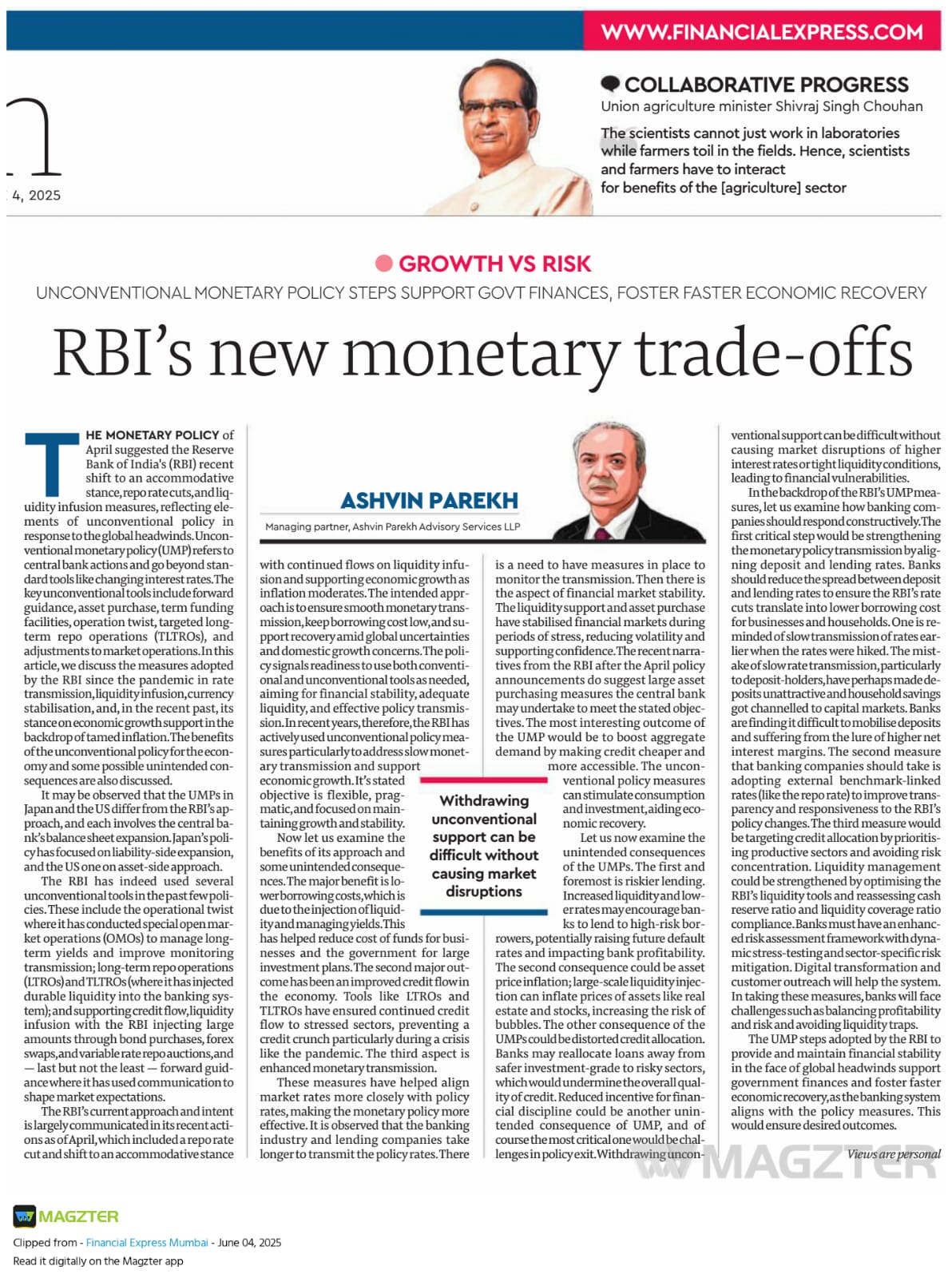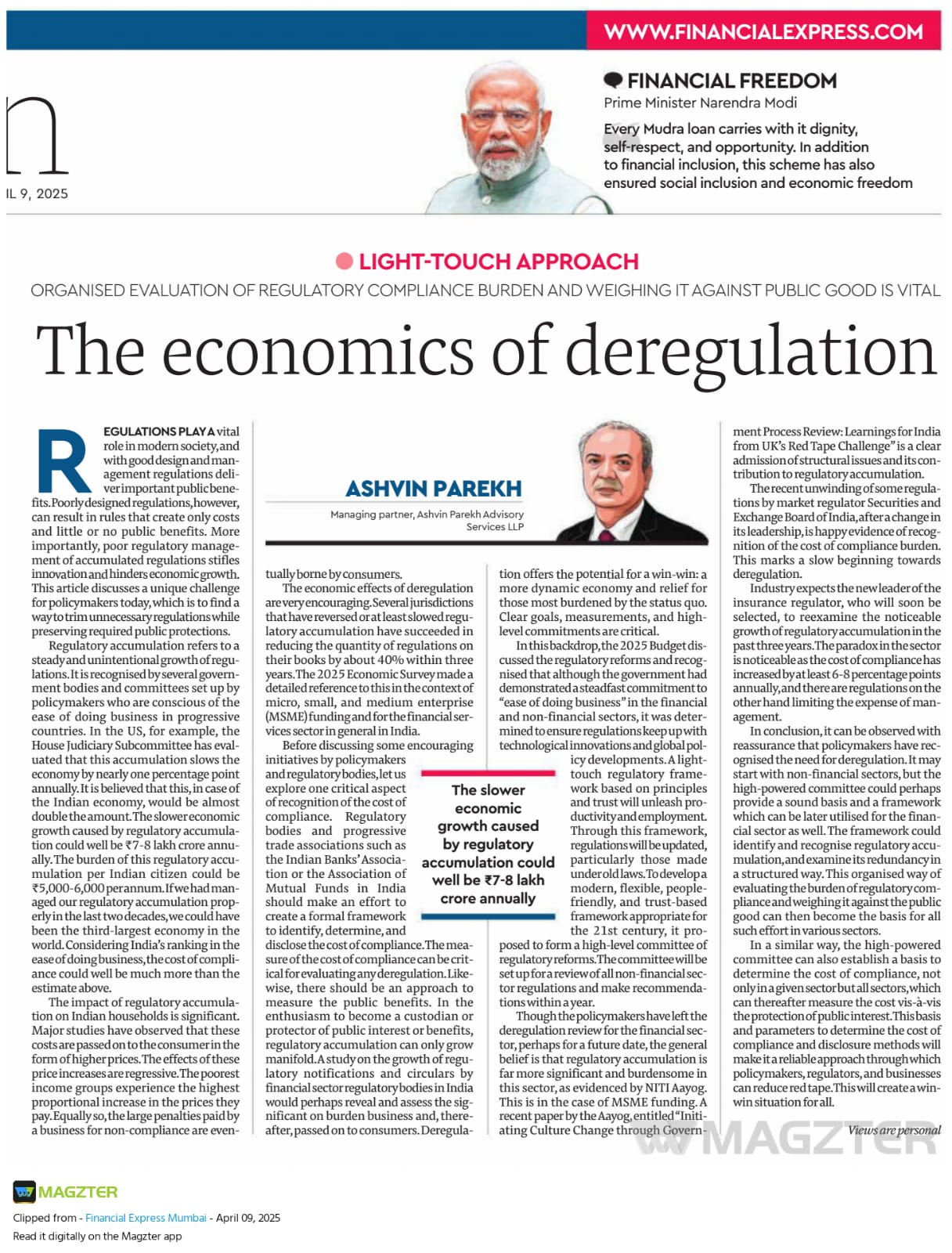by APAS Team
Share
by APAS Team
Share


The efficacy of monetary policy actions lies in the speed and magnitude with which the central bank achieves its objectives. With the deepening of financial systems and growing sophistication of financial markets, most central banks are increasingly using indirect instruments (such as policy interest rates and open market operations) rather than direct measures (like credit allocation). In the monetary policy issued on 8th April 2022, Reserve Bank of Indi (RBI) has put to use, a new instrument called Standing Deposit Facility (SDF) which was recommended by ‘Expert Committee to Revise and Strengthen the Monetary Policy Framework” led by Urjit Patel in January 2014. In 2018, the Section 17 of RBI Act, 1934, was amended to empower the RBI to introduce this instrument. This is considered as a significant milestone and is an unconventional way of doing what RBI is set to do.
RBI has the onerous task of maintaining liquidity in the system and fueling the growth while having inflation under control. RBI controls the money supply (liquidity adjustment) in the economy via Monetary Policy, using various tools. Traditionally, RBI uses three policy rates or instruments under Liquidity Adjustment Facility (LAF), to manage liquidity – (a) Repo Rate – RBI lends money to commercial banks at this interest rate (b) Reverse Repo – the rate at which the commercial banks can park their money with RBI and (c) Marginal Standing Facility (MSF) – rate at which RBI supplies liquidity to scheduled commercial banks in emergency situations and is generally used when interbank liquidity completely dries up. MSF is used at the discretion of banks whereas repo/reverse repo are available at discretion of RBI.
In addition to LAF, RBI has now added another instrument called SDF in its tool kit to suck excess liquidity from the system. Through SDF, the banks with excess liquidity are incentivized to park their excess funds without receiving any collaterals. While reverse repo has been used to do the same that SDF is aimed at, the difference between reverse repo and SDF is that SDF comes without any collateral which otherwise are government securities. The SDF rate will be below the policy rate (Repo rate), and it will be applicable to overnight deposits at this stage. It would, however, retain the flexibility to absorb liquidity of longer tenors as and when the need arises, with appropriate pricing.
Collateral may become a constraining factor if the central bank runs out of securities to absorb liquidity under the reverse repo window. From RBI’s perspective, SDF will help in sucking liquidity without operational issues involving exchange of securities. RBI may not always achieve what it is set to do due to limitation on the government securities and therefore SDF will ease that pressure considering that it is collateral free. So now, SDF will remain in RBI’s tool kit and shall be used at the discretion if RBI from time to time.
In the monetary policy issued by RBI on 8th April 2022, RBI has fixed the SDF rate at 3.75 per cent, 25 bps below the repo rate of 4 percent. The policy corridor is effectively the difference between the rate at which the RBI accepts money from banks and the rate at which it infuses money into the system. Since the RBI will no longer accept money for anything lower than 3.75%, the SDF rate becomes the floor for the policy corridor. The ceiling for the corridor will be the marginal standing facility (MSF) at 4.25%, 25 bps above the repo rate. Now, repo rate is in the middle with SDF as the new floor and MSF as the ceiling.
Sujana Hari
STAY IN THE LOOP
Subscribe to our free newsletter.
The slower economic growth caused by regulatory accumulation could well [...]
Navigating the Future of Consulting: The Role of Digital Transformation [...]



